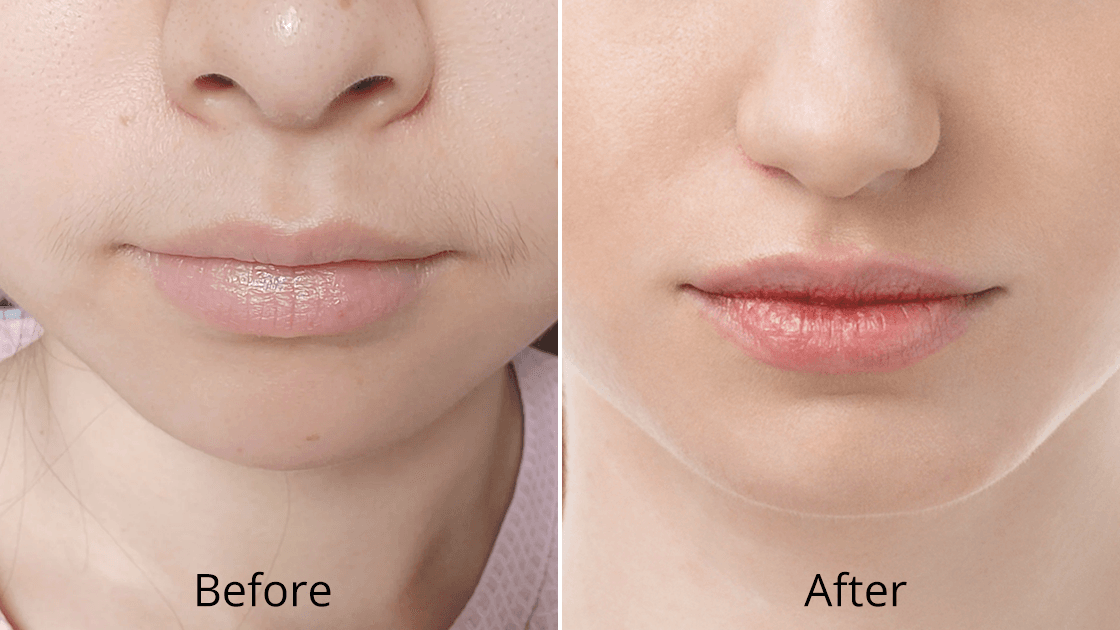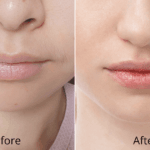The pursuit of smooth, hair-free legs has led many individuals to explore various hair removal methods, from traditional shaving to waxing and beyond. Among these options, laser hair removal has emerged as a revolutionary solution that offers long-lasting results with minimal maintenance. When it comes to treating the calf area specifically, this advanced technology presents unique advantages that make it an increasingly popular choice among both men and women seeking effective hair reduction.
1. Introduction: The Benefits of Laser Hair Removal for Calves
Modern aesthetic medicine has transformed the landscape of hair removal, offering solutions that go far beyond temporary fixes. Laser hair removal represents a paradigm shift in how we approach unwanted hair, particularly in areas like the calves where traditional methods often fall short. This innovative treatment combines cutting-edge photonic technology with medical precision to deliver results that were once considered impossible. The calf area presents unique challenges for hair removal due to its size, contour, and the typically coarse nature of leg hair. Unlike smaller, more sensitive areas, the calves offer an ideal canvas for laser treatment, allowing practitioners to work efficiently while patients experience minimal discomfort. The substantial surface area of the calves also means that the cost-effectiveness of laser treatment becomes particularly apparent when compared to a lifetime of alternative hair removal methods.
1.1 What Is Laser Hair Removal and How Does It Work on the Legs?
レーザー脱毛 works through selective photothermolysis, a process that targets melanin within hair follicles using light wavelengths of 755–1064nm. The pigment absorbs this energy more readily than surrounding tissue, creating controlled thermal damage that disrupts follicular stem cells and the dermal papilla while sparing the skin. Advanced diode laser systems generate coherent light that penetrates the epidermis to reach follicles in the anagen growth phase. Upon absorption, the photonic energy converts to heat, raising follicular temperatures to around 65–72°C—enough to inhibit future growth without harming adjacent structures. The legs, particularly the calves, are highly responsive to this treatment. Their dermal thickness and dense follicle distribution, combined with sufficient melanin concentration, make them ideal candidates for diode laser technology. Modern platforms also feature adjustable pulse durations and integrated cooling systems, ensuring both precision and patient safety. This balance of efficacy and protection delivers long-lasting results while minimizing discomfort and the risk of epidermal injury.
1.2 Why the Calves Are One of the Most Popular Areas for Treatment
Calf laser hair removal is popular due to both anatomical and practical advantages. The calves cover a large surface area with even hair distribution, making treatments efficient and cost-effective. Compared to more sensitive regions like the bikini line or underarms, the calves generally tolerate discomfort better, allowing for a more comfortable experience. Dermatologically, calf skin has fewer risks of issues such as hyperpigmentation or folliculitis, which can complicate treatment elsewhere. Because the area is often exposed to clothing friction and environmental irritation, traditional methods like shaving or waxing can cause discomfort, further highlighting the value of permanent reduction. Athletes especially favor calf treatments, as smooth legs enhance swimming and cycling performance while reducing friction. Beyond practicality, smooth calves boost self-confidence and influence clothing choices, given the visibility of the area. Clinical outcomes are strong, with complete series treatments typically achieving 80–95% hair reduction, making calf laser hair removal a highly effective long-term investment.
2. Why Laser Hair Removal Is the Ideal Choice for Calves
The decision to pursue laser hair removal for the calves represents more than just a cosmetic choice; it’s a strategic investment in long-term convenience, skin health, and aesthetic satisfaction. Understanding the scientific principles and practical advantages that make laser treatment superior to traditional methods is essential for making an informed decision about this advanced hair removal solution. Modern laser technology has evolved to address the specific challenges associated with leg hair removal, offering precision, safety, and effectiveness that surpasses conventional approaches. The following sections explore the key factors that position laser hair removal as the optimal solution for achieving smooth, hair-free calves.
2.1 Precision and Effectiveness: How Lasers Target Hair Follicles Directly
Modern laser systems mark a major advancement in hair removal, offering precise targeting of hair follicles while protecting surrounding tissue. Contemporary diode platforms use advanced beam profiling to distribute energy evenly, avoiding hot spots that could damage healthy skin. Calf treatments are especially effective due to the favorable contrast between darker hair follicles and lighter skin. The technology works by exploiting this differential absorption, where melanin in the follicle absorbs laser energy more readily than the surrounding tissue. Today’s systems also allow full customization, with adjustable pulse duration, fluence, and repetition rates tailored to each patient’s skin type and hair characteristics. Clinical studies confirm that modern diode lasers deliver superior results, achieving follicular destruction rates of over 85% in ideal candidates. This precision minimizes collateral tissue damage while enhancing effectiveness, ensuring smoother recovery and reducing the risk of post-inflammatory hyperpigmentation or scarring. The result is highly efficient, safe, and long-lasting hair reduction for the calves.
2.2 Cost-Effective in the Long Run Compared to Shaving or Waxing
An economic analysis shows that laser hair removal for calves offers a clear financial advantage over traditional methods. Over a lifetime, shaving supplies alone—razors, creams, and related products—can cost $2,000–$3,000. Waxing services average $50–$100 per session, needed every 4–6 weeks, adding up to $400–$800 annually. By comparison, a complete laser hair removal series for calves usually requires only 6–8 sessions within 12–18 months, totaling about $800–$1,500 depending on location and clinic. The long-term savings are substantial since laser treatment delivers permanent hair reduction lasting for decades, while shaving and waxing demand continual spending and effort. Indirect savings also add up—no more emergency razor runs, ingrown hair treatments, or regular waxing appointments. Equally important is the time saved: the average person spends roughly 72 days of their life shaving their legs. Laser hair removal frees that time for more meaningful activities, making it both a cost-effective and lifestyle-enhancing choice.
2.3 Minimal Pain, Downtime, and Skin Irritation
Modern laser hair removal has greatly improved comfort thanks to advanced cooling systems and refined treatment protocols. Today’s diode laser platforms use integrated technologies such as contact cooling, cryogen spray, and forced air to keep the skin’s surface safe while effectively targeting hair follicles. During calf treatments, the sensation is often compared to a light rubber band snap or gentle warmth—far more tolerable than waxing or epilating. Sessions for both calves typically take just 30–45 minutes, making them easy to fit into busy schedules. Unlike waxing, which can cause significant pain, skin trauma, and several days of sensitivity, laser hair removal involves minimal side effects. Most patients notice only mild redness that fades within a few hours. With no real downtime, you can return immediately to work, exercise, or daily activities. This convenience, combined with smoother results and reduced risk of ingrown hairs, makes laser treatment a superior option for long-term calf hair removal.
3. Advantages of Laser Hair Removal on Calves Compared to Other Methods
The comparative advantages of laser hair removal become particularly evident when examining the long-term outcomes and quality of life improvements it provides. Traditional hair removal methods, while immediately accessible, create ongoing cycles of maintenance, skin irritation, and temporary results that ultimately prove less satisfactory than permanent laser solutions. Understanding these comparative advantages helps individuals make informed decisions about their hair removal investment, considering both immediate and long-term factors that impact daily life, skin health, and overall satisfaction with treatment outcomes.
3.1 Long-Lasting Smoothness and Reduced Maintenance
Laser hair removal offers unmatched smoothness and longevity compared to traditional methods. Most patients achieve 80–95% permanent reduction after completing a treatment series. The hair that does return is usually finer, lighter, and less visible. This means minimal upkeep compared to the daily or weekly effort of shaving or waxing. Clinical studies show that patients enjoy long-term results for years. Occasional touch-up sessions every 1–2 years help maintain the best outcome. This differs greatly from shaving, which demands daily attention, or waxing, which lasts only 3–4 weeks before regrowth begins. The lower maintenance requirement provides major lifestyle benefits. Active individuals, such as swimmers and cyclists, often find smooth calves enhance both appearance and performance. Eliminating daily shaving also saves time while reducing cuts, nicks, and razor burn.
3.2 Fewer Ingrown Hairs and Less Skin Irritation
One of the key health benefits of laser hair removal is a sharp reduction in ingrown hairs and related skin problems. Shaving and waxing often block follicles and trigger inflammation, leading to razor bumps, pseudofolliculitis barbae, and other complications. Laser treatment disables the follicle, removing the source of ingrown hairs and providing lasting relief. Many patients who struggle with chronic folliculitis, razor bumps, or keratosis pilaris notice marked improvement after treatment. With the trauma of repeated shaving or waxing eliminated, the skin has a chance to heal and normalize. The benefits go beyond immediate comfort. Reduced irritation supports long-term skin health and improved barrier function. Without the constant damage from razors or waxing strips, the skin regains smooth texture and resilience. Patients often see less hyperpigmentation and fewer bacterial infections, as healthier follicles and intact skin are less vulnerable to irritation and breakdown.
3.3 Enhanced Aesthetic Appeal: Even-Toned, Silky Skin
Laser hair removal produces superior aesthetic outcomes compared to traditional methods, creating smooth, even-toned skin without the visible follicular openings or shadow effects that often persist after shaving. The treatment’s ability to target hair follicles deep within the dermis ensures complete removal rather than surface-level cutting that leaves hair shafts visible beneath the skin. The improved skin texture results from the elimination of chronic inflammation and irritation associated with repetitive hair removal trauma. Patients frequently report softer, smoother skin quality that feels silky to the touch and appears more radiant due to reduced keratinization and follicular plugging that occurs with traditional methods. The even skin tone achieved through laser treatment is particularly beneficial for individuals who previously experienced post-inflammatory hyperpigmentation from ingrown hairs or razor burn. The elimination of these inflammatory processes allows natural skin pigmentation to normalize over time, creating a more uniform and aesthetically pleasing appearance that enhances confidence and clothing choices.
4. What to Expect During Calf Laser Hair Removal
Understanding the laser hair removal process is essential for setting appropriate expectations and ensuring optimal treatment outcomes. The following sections provide detailed insight into each phase of the treatment experience, from initial consultation through post-treatment care and maintenance.
4.1 A Step-by-Step Look at the Treatment Process
Laser hair removal begins with a detailed consultation to review skin type, hair characteristics, medical history, and goals. Providers use the Fitzpatrick classification to set proper laser parameters and manage expectations. Preparation includes avoiding sun, stopping certain medications, and shaving the area 24–48 hours before treatment. During the session, patients wear protective eyewear and are positioned comfortably. A cooling gel is applied, and laser settings are adjusted based on skin response. The diode handpiece is moved systematically across the calves in overlapping patterns to ensure full coverage. Advanced systems use integrated cooling to maintain comfort, while sensors track skin temperature and adjust energy automatically. Treatment usually progresses from ankle to knee, with attention to varying hair density and skin sensitivity. Afterward, practitioners assess the skin’s reaction and refine future settings as needed. This careful process ensures effective follicle targeting with maximum safety and comfort.

4.2 Aftercare Tips for Faster Recovery and Better Results
Gently cleanse and moisturize treated skin to protect it from thermal trauma.
Avoid hot showers, saunas, and intense exercise for 24–48 hours after treatment.
Apply broad-spectrum sunscreen (SPF 30+) daily and reapply every 2–3 hours when outdoors.
Wear protective clothing and seek shade to reduce UV exposure during healing.
Begin gentle exfoliation 3–5 days post-treatment to aid natural hair shedding.
Avoid harsh scrubbing or abrasive products to prevent skin irritation.
Use fragrance-free, hypoallergenic moisturizers to maintain skin barrier function and promote healing.
4.3 How Many Sessions Are Needed for Lasting Hair Reduction?
The number of laser hair removal sessions depends on factors such as hair color, skin type, hormones, and the treatment area. For calves, most patients need 6–8 sessions spaced 6–8 weeks apart to achieve the best results. This schedule follows the hair growth cycle, ensuring that follicles in different stages receive treatment. The laser is most effective during the anagen, or active growth phase, but not all hairs enter this phase at the same time. Spacing sessions allows each follicle the chance to be treated when it is most vulnerable. Early sessions usually produce the most visible reduction, while later treatments focus on finer, lighter hairs. After completing the initial series, maintenance sessions may be suggested every 6–12 months. These touch-ups are less frequent and less intensive, helping to manage hormonal regrowth and dormant follicles while maintaining smooth, long-term results tailored to each patient’s unique growth patterns.
5. Who Makes the Best Candidate for Calf Laser Hair Removal?
Determining candidacy for laser hair removal involves careful evaluation of multiple factors that influence treatment safety and effectiveness. While technological advances have expanded treatment options for diverse patient populations, certain characteristics continue to predict optimal outcomes and minimize complications.
5.1 How Skin Tone and Hair Type Affect Treatment Results
Skin tone and hair type remain key factors in laser hair removal success. Modern diode technology, however, has expanded safe treatment options across many ethnic groups. The Fitzpatrick classification helps explain how melanin levels influence both safety and results. Patients with Types I–IV typically see the best outcomes, while Types V–VI require specialized protocols. Hair color and texture also affect effectiveness. Dark, coarse hair is ideal because it contains abundant eumelanin, which absorbs laser energy efficiently. In contrast, pheomelanin in red or blonde hair absorbs less energy, making treatment more challenging. Advanced diode systems with longer wavelengths can still improve results in lighter hair when protocols are adjusted. The contrast between hair and skin color guides energy settings and treatment intervals. Light skin with dark hair responds quickly at higher settings, while darker skin requires lower energy and advanced cooling for safety. Modern devices now use skin sensors and automated adjustments to ensure safe, effective treatments for all patients.
5.2 Lifestyle, Age, and Health Factors to Consider
Age mainly affects laser hair removal outcomes through hormonal stability rather than chronological limits.
Hormonal fluctuations from puberty, pregnancy, menopause, or medical conditions can impact results and require extra maintenance sessions.
Stable hormone levels provide the best conditions for long-term hair reduction.
Certain medical conditions and medications, such as photosensitizing drugs, autoimmune disorders, or active skin infections, may contraindicate treatment.
Patients with diabetes, keloid tendencies, or immunocompromised states may need modified protocols to ensure safety.
Lifestyle factors like sun exposure, exercise habits, and occupational demands should be considered when scheduling treatments.
Active individuals may need to temporarily adjust workouts after sessions to protect treated skin.
Consistent photoprotection is essential for patients with high sun exposure to prevent complications and optimize results.
6. Debunking Common Myths About Laser Hair Removal for Calves
Misconceptions about laser hair removal continue to persist despite extensive research and technological advances. Addressing these myths helps patients make informed decisions based on scientific evidence rather than outdated information or anecdotal experiences.
6.1 Does It Hurt? Understanding the Truth About Discomfort
The pain perception associated with laser hair removal has been significantly minimized through technological advances and improved treatment protocols. Modern diode laser systems incorporate sophisticated cooling mechanisms that maintain epidermal temperature below the pain threshold while ensuring effective follicular heating. Most patients describe the sensation as tolerable and significantly less painful than waxing. Pain perception varies based on individual tolerance levels, treatment area sensitivity, and operator technique. The calf region typically experiences minimal discomfort due to thicker skin and fewer nerve endings compared to more sensitive areas. Topical anesthetic creams can be applied for patients with low pain tolerance, though most find them unnecessary for calf treatments. The brief duration of discomfort during each pulse, typically lasting milliseconds, contrasts favorably with the prolonged pain associated with waxing or epilating. Progressive treatments often result in decreased sensitivity as hair density reduces and follicles become less active, making subsequent sessions increasingly comfortable for most patients.
6.2 Will It Work on My Skin Tone and Hair Color?
Advances in diode laser technology have broadened treatment options for a wide range of skin tones and hair colors. While the best results still occur in patients with dark hair and lighter skin, modern systems can effectively and safely treat darker skin types through customized protocols. Longer wavelength diodes (800–1064nm) penetrate deeper and are less absorbed by epidermal melanin, reducing risk for darker skin. Coupled with advanced cooling and real-time monitoring, practitioners can deliver effective energy while maintaining safety. High success rates are achieved across Fitzpatrick skin types I–V when proper settings are used. Hair color challenges have also improved through better understanding of melanin and laser interaction. Although blonde and gray hair remain difficult due to low pigment, fine or light hair often darkens and coarsens after early sessions, becoming more responsive to later treatments. With realistic expectations and adjusted schedules, most candidates achieve strong, lasting results.
6.3 Is It Safe for Every Skin Type? What You Need to Know
Laser hair removal is well-studied and proven safe across different skin types and populations. Modern diode systems are FDA-approved, with data supporting use on all Fitzpatrick skin types when correct protocols are applied. Serious complications are very rare, occurring in less than 1% of treatments by qualified practitioners. Common side effects—such as temporary redness, mild swelling, or follicular edema—usually resolve within 2–6 hours. More significant issues like hyperpigmentation, burns, or scarring are extremely uncommon with current technology and proper technique. Patient safety is reinforced through comprehensive consultation, appropriate selection, and adherence to treatment guidelines. Contraindications include active skin infections, certain autoimmune conditions, and the use of photosensitizing medications. Pregnancy is not unsafe but typically deferred due to hormonal changes that may affect results. With proper screening and medical history review, laser hair removal offers a safe, effective solution for long-term hair reduction across all ages, ethnicities, and skin types.
7. Conclusion: Why Laser Hair Removal Is the Best Investment for Your Calves
Laser hair removal for calves is more than a cosmetic choice—it’s a lasting investment in convenience, skin health, and confidence. Compared to shaving or waxing, it offers unmatched comfort, safety, and long-term value. Modern diode laser technology has advanced to serve a wide range of skin types and hair colors, using precision targeting, cooling systems, and customizable settings to maximize results while minimizing discomfort. The benefits extend far beyond smooth skin. Eliminating daily shaving, ingrown hairs, and repeated irritation improves overall skin health while saving significant time and effort. Economically, the upfront cost quickly offsets years of spending on razors, creams, and waxing sessions. The efficiency and long-lasting results make it especially appealing for those seeking both practicality and aesthetics. With success rates reaching decades of reduced growth, calf laser hair removal remains the most effective, safe, and rewarding solution for individuals prioritizing beauty, comfort, and lifestyle enhancement.








